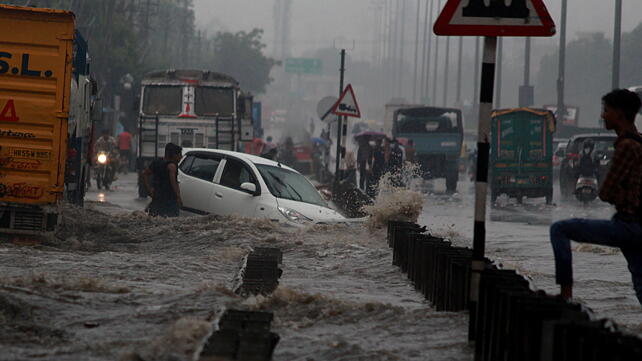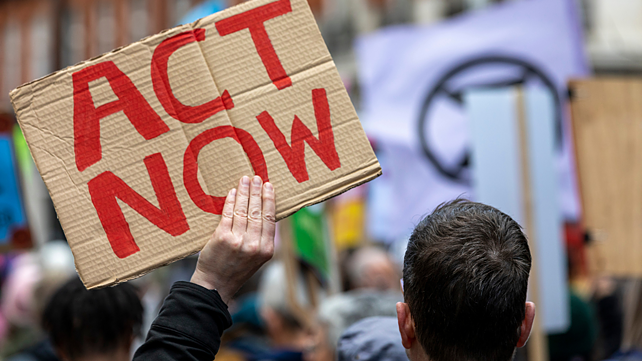
The article is co-authored by Amrita Shetty.
More concerted and immediate action will need to be taken to combat the intensifying climate change crisis. This was the message coming out loud and clear at the recently concluded 27th session of the Conference of the Parties of the UNFCCC (COP27) for climate change hosted in Egypt between November 6-18, 2022.
The conference could not have come at a more crucial time. From unprecedented floods in Pakistan to drought in China, from wildfires in Europe and Australia to hurricanes in the US, the frequency and severity of extreme climate change disasters have been extracting an ever more devastating humanitarian and economic toll.
India has not been immune to the climate crisis. The Centre for Science and Environment (CSE), in its “India 2022: An Assessment of Extreme Weather Events” report, noted that the country experienced extreme weather events on 241 of the 273 days between January 1 and September 30, 2022.
India and Climate Action
Today, India has the dubious distinction of being the world’s fourth largest emitter, after China, the US, and the European Union. Add to this, over the last decade, India and China have registered the highest emission growth rates. More tellingly, the Global Carbon Budget report, published during the COP27 Conference, estimates that while China and the EU will reduce their emission rates in 2022, India’s emissions will spike by 6%.

Nevertheless, the significant point is that India’s relatively high emission growth rate notwithstanding, its per capita emission is still lower than that of China, the US, and the EU, with annual per capita emissions around one-third of the global average.
Cognizant of the need for immediate climate control measures, India has been spearheading policy, strategy, initiatives, and investments designed to shift to low-carbon development and reduce emissions. At COP 26 in Glasgow in 2021, India committed to the short-term goal of meeting half its energy needs from renewable sources by 2030 and to the long-term goal of realising net zero emissions by 2070.
India has clearly indicated its intention of keeping to its commitments. At COP27, it released its Long-Term Low Emissions Development Strategy, sharing the roadmap of how it plans to transition to low carbon in key economic sectors and foreseeing the expanded use of renewables and nuclear power. This places the country in a select group of only 57 countries that have drawn up similar long-term climate action strategies.
To meet its 2030 climate targets, India revised its Nationally Determined Contributions (NDC) in August 2022. The agenda envisages that the country will “reduce the emissions intensity of its GDP by 45% by 2030, from 2005 level, and achieve about 50% cumulative electric power installed capacity from non-fossil fuel-based energy resources by 2030.”
Thrust Towards E-Mobility
One aspect of India’s thrust towards low-carbon pathways is technology, whether in terms of renewable and alternate energy development or e-mobility and clean energy solutions. E-mobility has been high on the government’s agenda. The Faster Adoption and Manufacture of (Hybrid) and Electric/Hybrid Vehicles (FAME II) scheme, the Production Linked Incentive for Advanced Chemistry Cell Battery Storage (PLI-ACC Scheme), the proposed battery swapping policy, and scrappage policy seek to incentivise the move to electric and hybrid vehicles.
While the move to e-mobility is important, India will have to contend with China’s dominance of an already volatile electric vehicle (EV) supply chain. And while there are challenges galore, Atmanirbhar Bharat seeks to reinforce localised supply chains and manufacturing capabilities, along with the expanding use of intelligent transport systems and smart city infrastructure, to create a sustainable mobility ecosystem.

In terms of alternative fuels, the country kick-started the National Hydrogen Mission in 2021 to popularise green hydrogen. India is also exploring the use of ethanol blended fuels. Moreover, the country is planning to treble its nuclear power generation capacity in the next decade to reduce its dependence on coal, minimise its carbon footprint, and promote clean energy sources to meet burgeoning energy demand.
The other aspect of the shift towards low carbon is individual and community behaviour. Although most people are now aware of the urgent need to make sacrifices, the action does not always follow. In many cases, questions of economics or convenience have trumped concerns over what is best for the environment.
It was with this in mind that the government promoted the Lifestyle for Environment mission – Mission LiFE – and included it in its revised Nationally Determined Contributions (NDCs), before formally launching it in October 2022. This climate change initiative is described as “an international mass movement towards mindful and deliberate utilisation, instead of mindless and destructive consumption.”
One of the major challenges that lie ahead is climate finance. India has estimated that it will require trillions of dollars to implement climate change plans and transition to a net zero carbon economy by 2070. The issue of funding becomes even more critical if one considers IPCC’s report ‘Climate Change 2022: Impacts, Adaptation & Vulnerability,’ which states that the regions and people most vulnerable to the impacts of climate change live in lesser developed countries.
They lack the resources to adapt to or mitigate climate change impacts. It is, therefore, encouraging that a consensus was reached at COP27 to set up a “Loss and Damage Fund”, which envisages providing institutionalised financing support to low-income countries affected by adverse climate change.
In Conclusion
India has just assumed the Presidency of the G20 in 2023 with the motto of ‘One Earth, One family, One future’. Among the five main themes that will be discussed include green development and LiFE, with India having introduced a working group – one of the 13 – to address disaster risk resilience and reduction. It remains to be seen whether countries can put aside their individual needs and respond unitedly to the deepening climate crisis.
About the Author: Prajyot Sathe is Research Manager – Mobility Practice and Amrita Shetty is Senior Manager, Communications & Content – Mobility at Frost & Sullivan.
Note: Schedule your Growth Pipeline Dialog™ with the Frost & Sullivan team to form a strategy and act upon growth opportunities: https://frost.ly/60o.
Also Read:
Climate Angels Launches Syndicates For Climate Tech Start-ups
General Motors Announces Doubling of its Climate Equity Fund
WayCool Joins Climate Group's EV100, Aims For All Electric Fleet By 2030